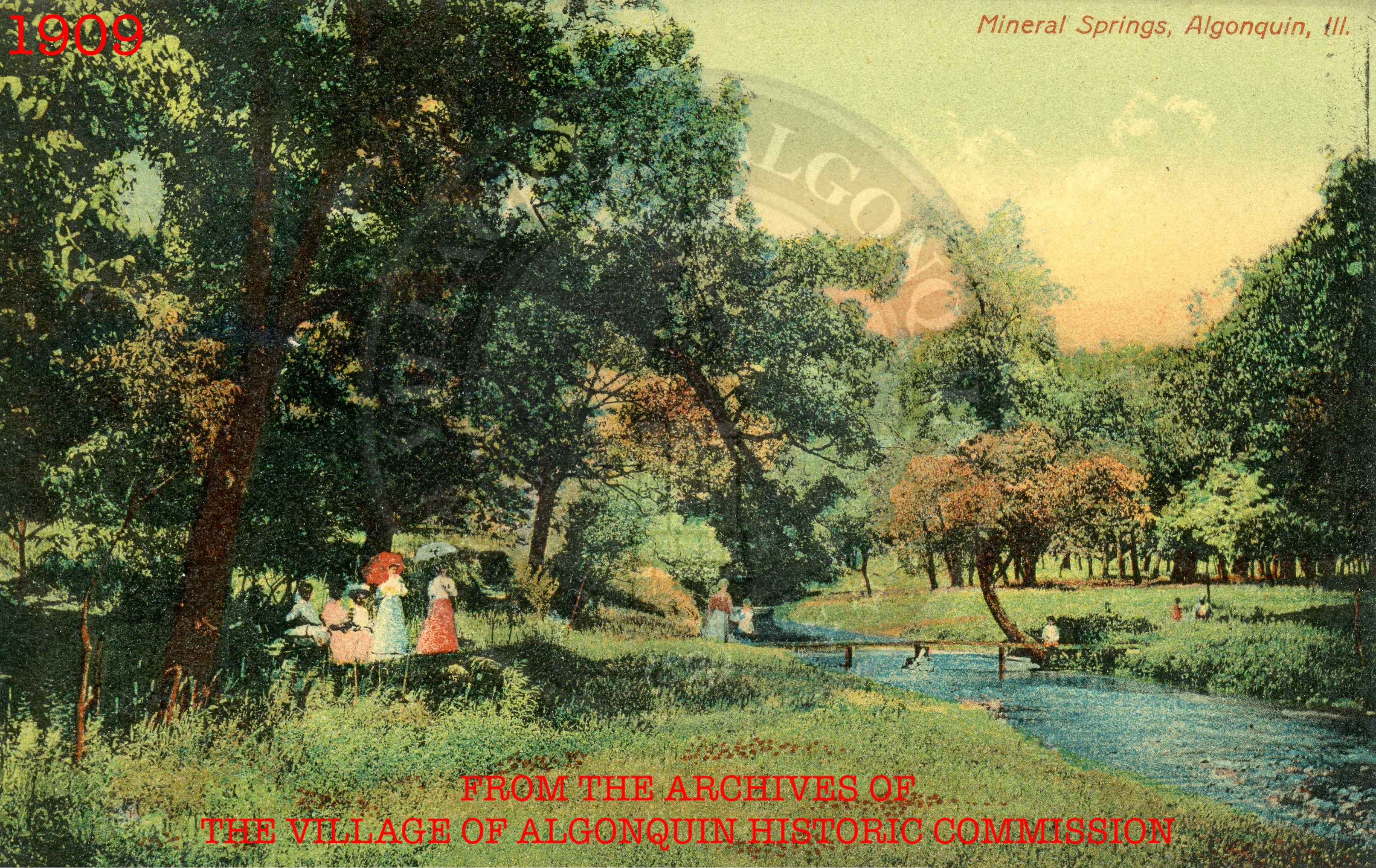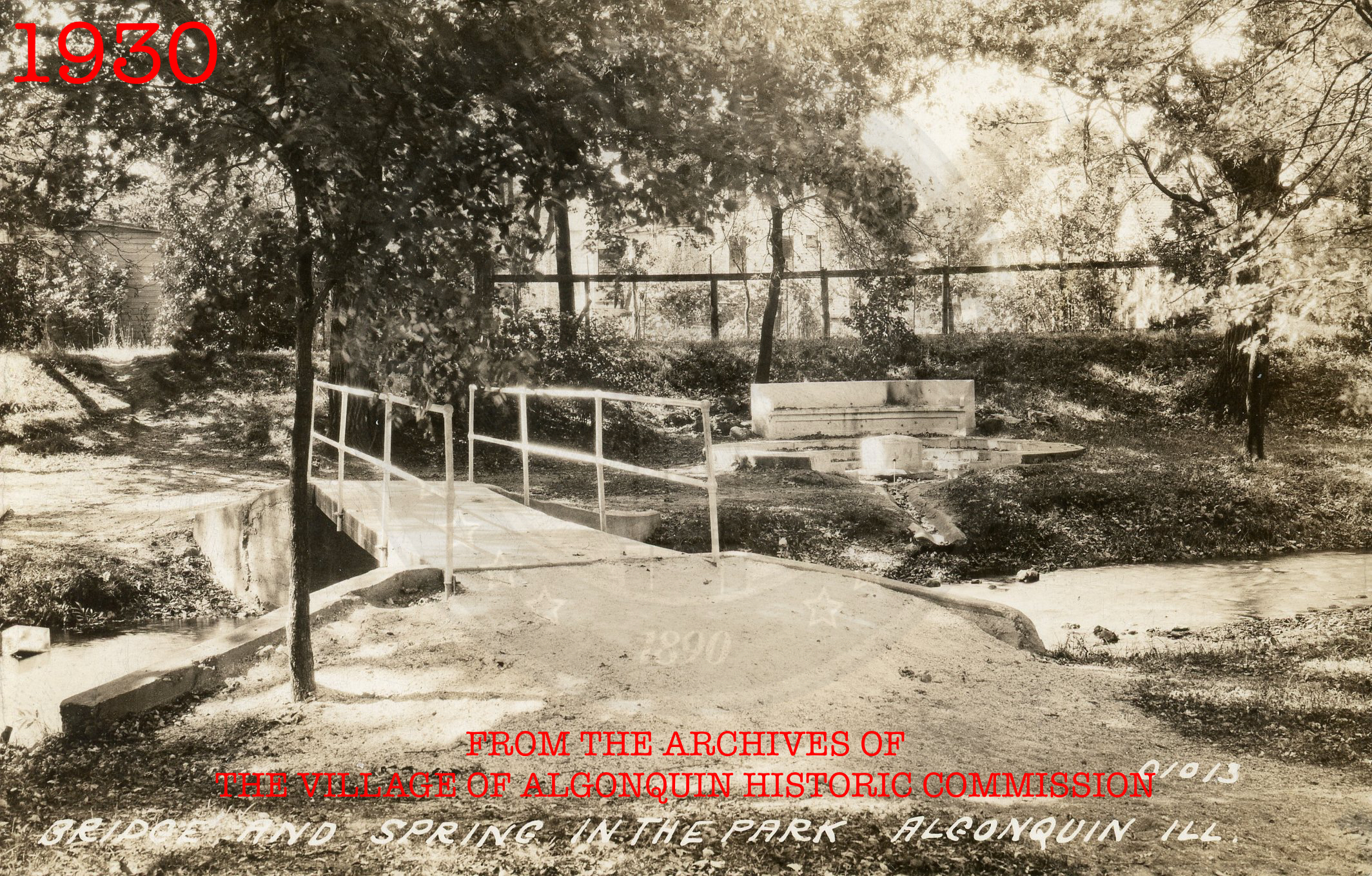The Village of Algonquin, IL
Welcome to the website for the Village of Algonquin!
History of Algonquin - Significant Sites & Structures - Mineral Springs
For centuries, humans and wildlife have sought fresh water at the mineral springs. Though no archaeological evidence remains, the site is in the immediate vicinity of documented trails of indigenous peoples who lived in and traveled across the nearby Fox River before European settlers located near the springs adjacent to the creek feeding into the river. For these pioneers, the site was the principal water source around which the town, the oldest in McHenry County, was settled in 1834.
Given this historical importance, the Algonquin Woman’s Club sought to preserve the site and the surrounding land that became Towne Park in 1915. Due to these actions, the site is also important to women’s history. From the late 1860’s, until women were granted the right to vote in 1920, women’s clubs across the nation, like Algonquin’s, worked to educate people about local social and civic issues and devised solutions to better their communities. The Algonquin Woman’s Club encouraged local government to purchase the land that became Towne Park where the Mineral Springs site is located. When constructed, the site sat at the top of historic “Lovers Lane,” with countless marriage proposals made at the cement bench added by the Algonquin Woman’s Club, particularly by soldiers heading off to various wars since World War I.
The Mineral Springs site also presents an opportunity to educate residents and visitors about Algonquin’s history of indigenous habitants, pioneer settlement, and women’s civic contributions, strengthen the community’s sense of place, and make the village more attractive to live, conduct business, and visit.
Return to the History of Algonquin.
Photos from the Historic Commission Archives
 |
 |
